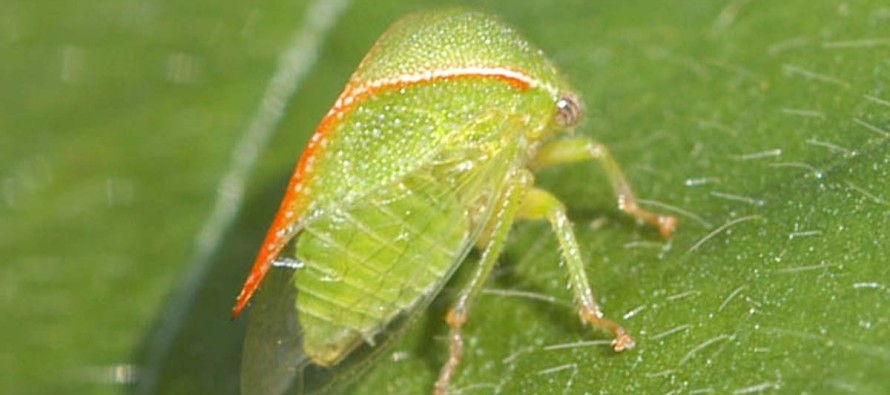Threecornered Alfalfa Hoppers Damaging Young Cotton

Related Articles
- Fertilizing Cotton with Poultry Litter 5
- Mississippi Cotton Insect Situation of 2010: A Look Back 3
- Bayer CropScience-O.A. Cleveland Weekly Cotton Commentary 0
Latest Tweets
I have had quite a few calls this year about threecornered alfalfa hoppers in cotton. There have been a few treatments on limited acres to date. In the past damage has usually been confined to field borders, but again this year it seems to be more widespread across whole fields in the areas where they are present. Most calls have been from the Hill region but there has been several from Delta areas as well. Typically cotton plants that have been injured from TCAH’s appear stunted, leaf veins begin to turn dark red, and leaves take on a red/orange appearance (kind of looks like a small cotton plant with bronze wilt). There will also be a knot or multiple knots on the stem usually below the cotyledons. When soybean plants are injured early from TCAH, they are more susceptible to lodging later in the year, but if the plants do not lodge they usually go on to produce normal yields. This is not the same situation with cotton. A large percentage of cotton plants will not recover or will bend over and break or even die outright. They are difficult to scout for on small cotton and soybeans and most often we see the injury after the fact. I have had some success in both crops by doing visual searches early in the morning before they become active. In cotton, you can usually ease up and examine the plants and will see them sitting on the side of the stem or a leaf petiole.
Typically you will hear, “Treatment would be justified if they are reducing plant stand below a desired level in cotton” but what does this mean? In my opinion it means nothing because once you realize they are reducing the stand below a desired level they are gone and it is too late to do anything about it anyway. We really have no threshold in cotton. From my own observations I would treat cotton that is 5 nodes are less when you visually can find one TCAH every 3 row ft, or 10 per 25 sweeps. I have nothing other than my own experience to make this recommendation, so take it for what its worth. In cotton, main stem girdling usually ends around 6-8 nodes then they will move to petioles. There is no question that seed treatments have activity on TCAH in soybeans and I suspect that they do as well in cotton but there are a lot fewer plants per acre in cotton and they do have to feed to pick it up. Also, seed treatments are wearing off by the time we get to about 4 leaf cotton so I wouldn’t expect much from them unless its very small cotton. Control options would be similar in cotton as in soybeans. Pyrethroids and Orthene will work well in both crops but don’t treat either crop unless absolutely necessary because you can flare mites in cotton and reduce beneficial insects in soybean which will open you up to corn earworm outbreaks potentially. See pictures below for symptomology. Do not be surprised if you make a treatment and next time you check the field again numbers are high again. I witnessed this numerous times last year. I assure you TCAH are not difficult to control. They will however re-infest fields rapidly after treatment giving the appearance of little or no control. The good news is that regardless of symptomology observed, we rarely see yield loss. The individual damaged plants definitely experience yield loss, but because the damage happens so early in the season, the neighboring plants compensate. With that said, I have seen yield limiting infestations and even replants in the past but that is not the norm. Bottom line is while scattered plants look very bad and are easy to pick out when walking fields, it takes a whole lot to reduce yield. Call if you have further questions.








Let me tell You a sad story ! There are no comments yet, but You can be first one to comment this article.
Write a comment